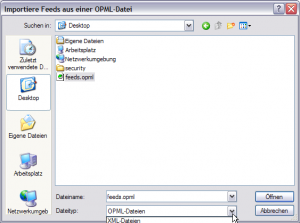
You can control TNEF by using one of three methods: If a message is sent without TNEF, the recipient can view and save the attachments as expected. If you are sending messages that have file attachments to a recipient who does not use Outlook or the Exchange Client, we recommend that you manually choose to use an email format which does not require TNEF (such as HTML or plain text). In most cases, the binary attachment is named Winmail - which contains a load of info that only microsoft product can by default read. This method is technically known as Transport Neutral Encapsulation Format known as TNEF.Ī TNEF encoded message contains a plain text version of the message, and a binary attachment that packages various other parts of the original message. Links are difficult to create at the moment so I'm copy pasting directly from the microsft webpage.īoth Microsoft Outlook and the Microsoft Exchange Client sometimes use a special method to package information for sending messages across the Internet. All this info is available via an easy Google search for outlook tnef winmail So maybe it has not been switched off in the manner your colleague thinks. This is a microsoft specific issue and there are a few different ways of switching it off. There's another way.Colleague is using TNEF otherwise you would not have a winmail file. So if you're out there suffering from winmail.dat syndrome, put the sledgehammer down.

#Winmail reader thunderbird windows
Winmail.dat Reader - Windows 95X though Windows Server 2003.Below is a brief list based on your computer's operating system: There are actually a handful of tools that can help you to view winmail.dat files. If you use a non-Microsoft e-mail application like Thunderbird or Lotus Notes, what can you do to convert winmail.dat files back to a viewable format? " to either "Convert to HTML format" or "Convert to Plain Text format". Set "When sending Outlook Rich Text messages to Internet.On the "Tools" menu, click "Options", then click the "Mail Format" tab, and then the "Internet Format" button.All e-mail accounts are able to view plain text.Īccording to MozillaZine, people with Outlook 2002 (aka XP) and Outlook 2003 can take the following steps to disable sending out TNEF attachments: You could select to send your messages In HTML format however, not all e-mail recipients are able to view e-mail in HTML format.
#Winmail reader thunderbird how to
Learn how to disable rich text format here. This is an option in all versions of Outlook. In other words, configure your Outlook to send messages as plain text rather than rich text format. The most universal answer is to stop sending pretty e-mails. What can you do to make sure people don't receive winmail.dat files from your Outlook? Sometimes the winmail.dat is a small file with formatting information that accompanies the original message other times, the winmail.dat file contains the formatting information as well as the original message or other attachment files. I am not surprised when an error message pops up to tell me that I am unable to open this file.ĭoes either side of this situation sound familiar to you? If so, then you'll be happy to know that there are ways to overcome winmail.dat syndrome!Ī winmail.dat file is a TNEF (transport neutral encapsulation format) attachment sent by a Microsoft e-mail application like Outlook, when someone has their Outlook set to generate e-mail messages in Rich Text Format (RTF) OR when you use Microsoft Word as your e-mail editor. As i go to open the file, I notice that it is listed as "winmail.dat". A colleague has attached an important Word document to his message that requires my immediate attention and response. I'm blazing on the laptop at home - reading e-mail messages in Thunderbird.Her reply message reads, "Sorry, I'm still getting a winmail.dat file. (Sorry, bad pun.) I sent her an Excel file. Can you resend in a different format?" This does not compute. I'm blazing on the keyboard at work - sending out e-mails through Microsoft Outlook like a madman - when I get a reply that reads, "Your attachment is a winmail.dat file.Here's a double-sided scenario that has plagued me for the past few months:


 0 kommentar(er)
0 kommentar(er)
